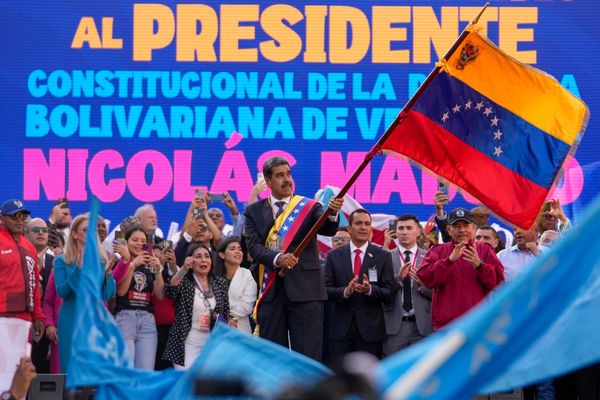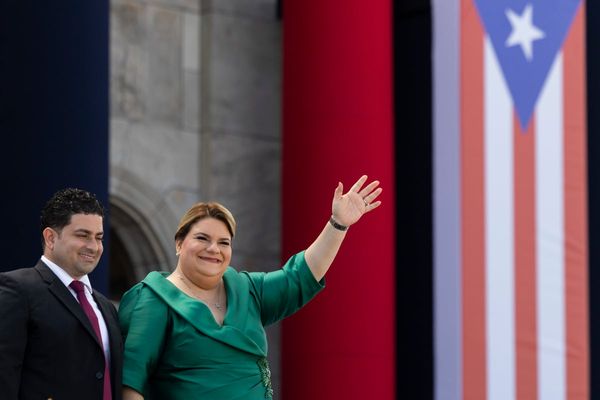
The U.S. sanctions imposed in April against several Russian banks, technology companies, individuals, and part of its sovereign debt were another step in the ongoing effort by Washington and its European allies to punish the Kremlin for reckless and aggressive acts against Russia’s neighbors and the West. Similar stringent measures are gaining traction in Europe. Last week, by an overwhelming vote of 569 to 67, the European Parliament resolved that in the event of renewed Russian aggression against Ukraine, “Russia should be excluded from the SWIFT payment system, and all assets in the EU of oligarchs close to the Russian authorities and their families in the EU need to be frozen and their visas cancelled.”
The latest round of sanctions has revived a debate about whether the measures are painful enough, target the right people, or are effective at all. After all, the sanctions have not resulted in Russian President Vladimir Putin reversing course. But the critique of sanctions falls short: The sanctions have already weakened Russia, constrained its resources, and restricted Putin’s room to maneuver. Given time, and enhanced by additional measures, they could deny Putin the resources to do future harm.
As we know, the United States and its allies have applied a wide array of sanctions in response to specific Kremlin misdeeds—including political assassinations on European soil, human right abuses, cyberattacks on Western governments, companies, and institutions, the illegal annexation of Crimea, and the prosecution of a war of territorial conquest in Eastern Ukraine that has claimed more than 13,000 lives. The West has expelled Russian diplomats, sanctioned individuals and companies, and cut off Russian access to a range of economic and financial transactions.
Yet critics have long asserted that such limited sanctions don’t deter Putin: that they hurt only ordinary Russians and punish the economies of the Western countries implementing sanctions. And indeed, sanctions are a limited tool, especially in the short run. While sanctions imposed after Putin’s invasion of Ukraine probably helped deter Russia from deeper aggression, neither diplomacy nor the current level of sanctions has convinced Putin to pull out of Ukraine, nor has it prevented Russia’s continued interference in U.S. and European elections.
While scattershot sanctions may appear limited and weak right now, their long-term impact will likely be profound—especially in setting back the Russian economy on which its kleptocratic power structure feeds. An IMF study published in 2015 after the imposition of sanctions in response to the Ukraine invasion concluded that Western sanctions and Russian counter-sanctions “could initially reduce [Russia’s] real GDP by 1 to 1.5 percent.” That might not seem like much, but the report also predicted a medium-term GDP hit of up to 9 percent from prolonged sanctions “as lower capital accumulation and technological transfers weaken already declining productivity growth.” More recent assessments estimate that U.S. and international sanctions reduce Russia’s GDP growth by 1.5 percent each year.
Our colleagues at the Atlantic Council, Anders Aslund and Maria Snegovaya, suggest an even greater impact: Since 2014, sanctions may have reduced average Russian GDP growth by more than 2.5 percentage points each year. Part of the reason for the severe hit is that the Russian Central Bank and government, in their attempt to insulate the economy from Western pressure, have been preserving and accumulating capital, which severely constrains them from pursuing a more expansive fiscal or monetary policy.
As a result, the Russian economy has grown at a dismal average of 0.3 percent a year since the West first imposed sanctions in 2014. While part of the reason for low growth is the decline in oil and gas prices (on which Russia’s petrostate economy depends), sanctions have also clearly had a major effect on decisions by investors, companies, and the government.
The long-term effect of sanctions could be profound. If Aslund’s and Snegovaya’s estimate is correct, Russia’s economy could grow by 64 percentage points less than without sanctions after 20 years. If the IMF’s slightly lower estimate is correct, the relative shrinkage would be 35 percentage points. Either way, it would mean a Russia with far fewer resources to spend on military adventures, subversion, disinformation, and repression. Recent years have already seen Moscow reduce its ambitious plans for military spending, in part as a result of sanctions.
The rogue behavior not just of Putin, but of Russia’s vast military, security, and intelligence establishments, is deeply engrained in the country’s political culture and unlikely to change dramatically. In addition to current sanctions, it is therefore time for Washington and its allies to develop and implement a comprehensive long-term effort to impede Russian economic growth as long as Moscow remains on its aggressive course, thereby reducing the Kremlin’s potential for projecting power.
Even if the West should cooperate with Moscow wherever possible—on arms control and climate policy, for example—it must assume that Russia will remain aggressive for as long as Putin and his circle remain in power. The Western allies must therefore plan for what could turn out to be many years.
In such a plan, sanctions should not be limited to a few economic targets or the Russian state. Under Putin, much of the business, media, and cultural elite has been enlisted in support of the Kremlin’s attacks on other countries, whether military or cyber. Via Russian oligarchs and their businesses, Putin has also bought the support of former Western government officials and establishment figures, including in Britain, Germany, and Austria. These individuals can be targeted as well.
Here are some additional measures that could bolster efforts to diminish Russian economic growth:
- Significant expansion of individual sanctions targeted at Putin’s cronies, favored oligarchs, and Western figures in his employ, who often act as vectors of Kremlin influence in the West;
- Increased financial sanctions that target Russian financial institutions such as the VEB development bank, which the Kremlin uses to finance pet projects;
- Further limiting the Russian government’s access to Western financial markets, for example by restrictions on the secondary trading of its sovereign debt;
- Broader energy sector sanctions targeting investment, not current production—for example, by restricting access by Russian energy companies to financing;
- Intensified and internationally coordinated technology export controls, building on the early Ukraine-related sanctions.
Of course, the United States and its allies should establish clear conditionality. Targeted sanctions should be removed if, for example, a settlement in the Donbas is reached. But there is little sign of Russian interest in such a deal.
A vital measure to enhance sanctions would be greater financial transparency, as painful and embarrassing that would be in much of the West. This would include measures to reveal Russian ownership of assets and business entities, reducing the scope for money laundering and influence peddling. These transparency measures should be developed with Britain, the European Union, and Switzerland. What’s more, financial transparency requirements should be established in any event and not directed primarily at Russia—they are measures of good international governance, not a penalty or sanction.
Each of these measures on their own would be important in their economic impact and as signals to Putin. Taken collectively as part of a comprehensive long-term strategy—and developed jointly by the United States, the European Union, Britain, and other key European governments—they would signal that the democratic world is taking the authoritarian challenge posed by Moscow and other actors seriously.
The time has arrived for a serious, strategic, trans-Atlantic conversation about a policy of sustained economic pressure on Putin’s regime. An effective, systematic, long-term approach to sanctions to last as long as Putin’s aggressive course remains the governing mode in Moscow will increase the odds of a better relationship with Russia in the post-Putin future. Today’s task is not simply to push back on the Kremlin for its past actions. The point of Western policy should be to deny Putin’s Russia the resources and potential to do future harm.







